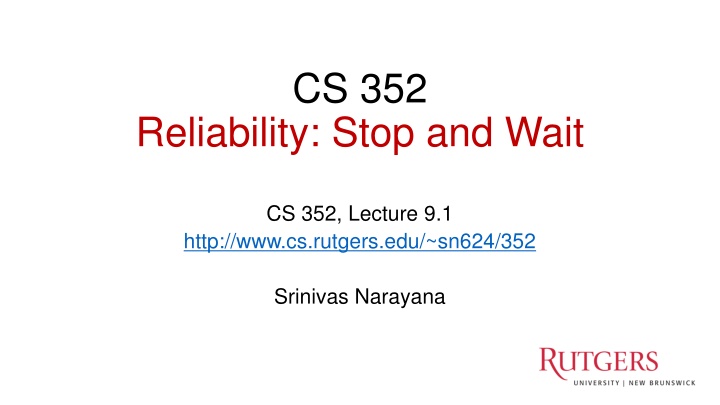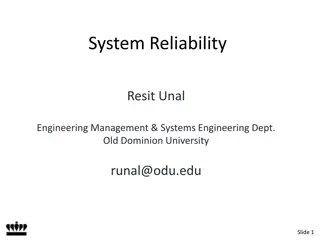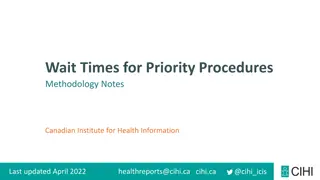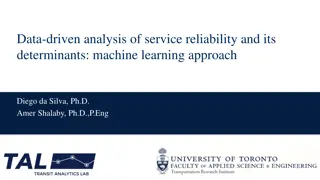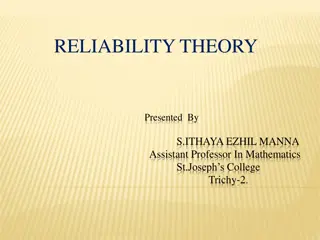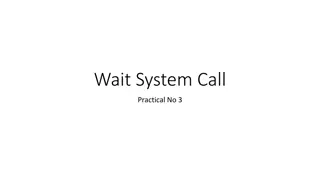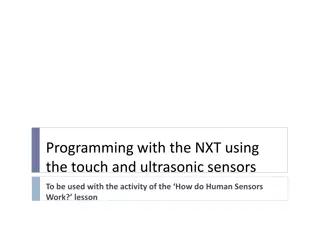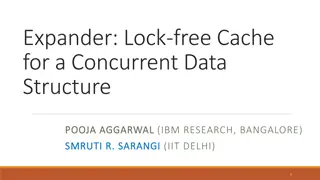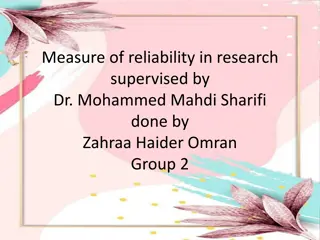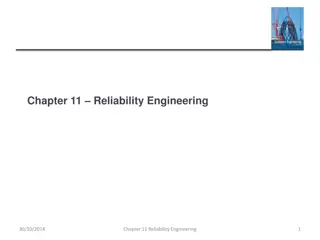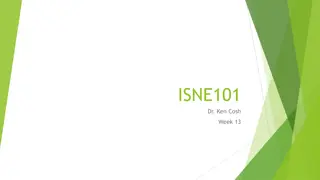CS 352 Reliability: Stop and Wait
The lecture discusses reliability in CS 352, focusing on stop-and-wait protocols. Topics include ensuring reliable data delivery, coping with packet loss and corruption using mechanisms like acknowledgments and retransmission timeouts in TCP.
Download Presentation

Please find below an Image/Link to download the presentation.
The content on the website is provided AS IS for your information and personal use only. It may not be sold, licensed, or shared on other websites without obtaining consent from the author.If you encounter any issues during the download, it is possible that the publisher has removed the file from their server.
You are allowed to download the files provided on this website for personal or commercial use, subject to the condition that they are used lawfully. All files are the property of their respective owners.
The content on the website is provided AS IS for your information and personal use only. It may not be sold, licensed, or shared on other websites without obtaining consent from the author.
E N D
Presentation Transcript
CS 352 Reliability: Stop and Wait CS 352, Lecture 9.1 http://www.cs.rutgers.edu/~sn624/352 Srinivas Narayana 1
Transport Application FTP HTTP HTTPS SMTP DNS Transport UDP TCP IP Network X.25 802.11 ATM Host-to-Net
Modularity through layering Apps: useful user-level functions HTTP FTP NV TFTP TCP UDP Transport: provide guarantees to apps IP Network: best-effort global pkt delivery Ether ATM WiFi Link: best-effort local pkt delivery
How do apps get perf guarantees? The network core provides no guarantees on packet delivery Transport software on the endpoint oversees implementing guarantees on top of a best-effort network Three important kinds of guarantees Reliability Ordered delivery Resource sharing in the network core Transmission Control Protocol (TCP)
Packet loss Receiver Sender How might a sender and receiver ensure that data is delivered reliably (despite some packets being lost)? TCP uses three mechanisms
Coping with packet loss: (1) ACK Receiver Sender Key idea: Receiver returns an acknowledgment (ACK) per packet sent packet ACK If sender receives an ACK, it knows that the receiver got the packet. packet ACK
Coping with packet corruption: (1) ACK Receiver Sender ACKs also work to detect packet corruption on the way to the receiver One possibility: A receiver could send a negative acknowledgment, or a NAK, if it receives a corrupted packet Q: How to detect corrupted packet? One method: Checksum! packet NAK packet TCP only uses positive ACKs. ACK
Coping with packet loss: (2) RTO Receiver Sender What if a packet is dropped? Key idea: Wait for a duration of time (called retransmission timeout or RTO) before re-sending the packet RTO In TCP, the onus is on the sender to retransmit lost data when ACKs are not received Retransmission ACK Note that retransmission works also if ACKs are lost or delayed
How should the RTO be set? Receiver Sender A good RTO must predict the round-trip time (RTT) between the sender and receiver RTT: the time to send a single packet and receive a (corresponding) single ACK at the sender RTO Intuition: If an ACK hasn t returned, and our (best estimate of) RTT has elapsed, the packet was likely dropped. ACK RTT can be measured directly at the sender. No receiver involvement needed.
Coping with packet duplication Receiver Sender If ACKs delayed beyond the RTO, sender may retransmit the same data Receiver wouldn t know that it just received duplicate data from this retransmitted packet RTO Duplicate packet received! (Receiver doesn t know ) Add some identification to each packet to help distinguish between adjacent transmissions This is known as the sequence number ACK
Coping with packet loss: (3) Sequence #s Receiver Sender A bad scenario: Suppose an ACK was delayed beyond the RTO; sender ended up retransmitting the packet. 0 RTO At the receiver: sequence number helps disambiguate a fresh transmission from a retransmission Sequence number same as earlier: retransmission Fresh sequence number: fresh data 0 ACK
Coping with packet loss: (3) Sequence #s Receiver Sender A good scenario: packet successfully received and ACK returned within RTO SEQ 0 Receiver knows these are not duplicate, because sequence numbers are different RTO ACK Sequence numbers of successively transmitted packets are different SEQ 1 RTO
Coping with packet loss: (3) Sequence #s Receiver Sender A good scenario: packet successfully received and ACK returned within RTO SEQ 0 Receiver knows these are not duplicate, because sequence numbers are different RTO ACK ACK 0 Sequence numbers of successively transmitted packets are different SEQ 1 RTO ACK 1 Further, the receiver informs the sender which packet was ACK ed using an ACK sequence number
Q: What is the seq# of third packet? Receiver Sender Goal: Avoid ambiguity on which packet was received/ACK ed from both the sender and receiver s perspective SEQ 0 RTO ACK 0 One possibility: keep incrementing the seq #: 2, 3, SEQ 1 RTO ACK 1 Alternative: since seq # 0 was successfully ACK ed earlier, it is OK to reuse seq #0 for next transmission. Seq #s reused if enough time elapsed ???
Summary: Stop-and-Wait Reliability Sender sends a single packet, then waits for an ACK to know the packet was successfully received. Then the sender transmits the next packet. Receiver Sender SEQ 0 RTT ACK 0 If ACK is not received until a timeout (RTO), sender retransmits the packet SEQ 1 Disambiguate duplicate vs. fresh packets using sequence numbers that change on adjacent packets RTO Retransmit
CS 352 Reliability: TCP Metadata CS 352, Lecture 9.2 http://www.cs.rutgers.edu/~sn624/352 Srinivas Narayana 18
Review: Stop-and-Wait Reliability Sender sends a single packet, then waits for an ACK to know the packet was successfully received. Then the sender transmits the next packet. Receiver Sender SEQ 0 RTT ACK 0 If ACK is not received until a timeout (RTO), sender retransmits the packet SEQ 1 Disambiguate duplicate vs. fresh packets using sequence numbers that change on adjacent packets RTO Retransmit
Q1: Where are seq & ACK #s written to? Naturally, in the packet header!
TCP header structure Source port, destination port (connection demultiplexing) Size of the TCP header (in 32-bit words) Basic error detection through checksums (similar to UDP)
TCP header structure Identifies data in the packet from sender s perspective TCP uses byte seq #s Identifies the data being ACKed from the receiver s perspective. TCP uses next seq # that the receiver is expecting.
A TCP exchange A small demo
